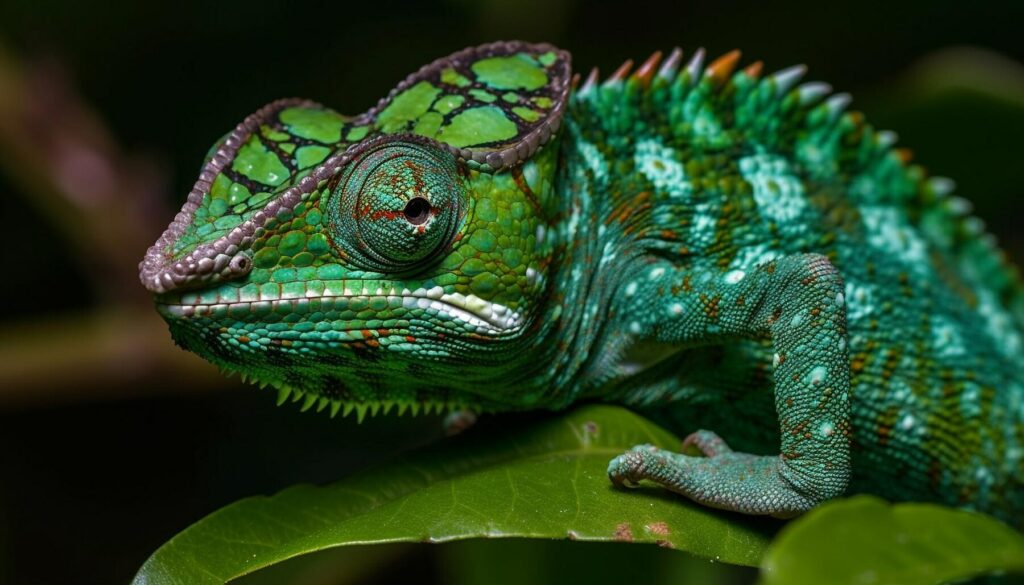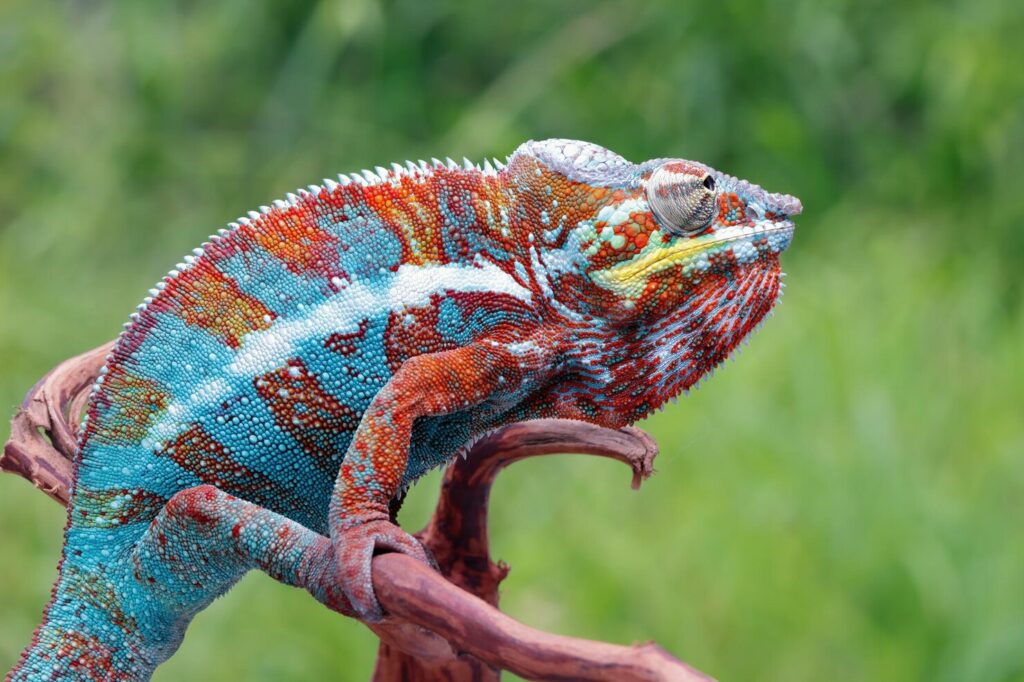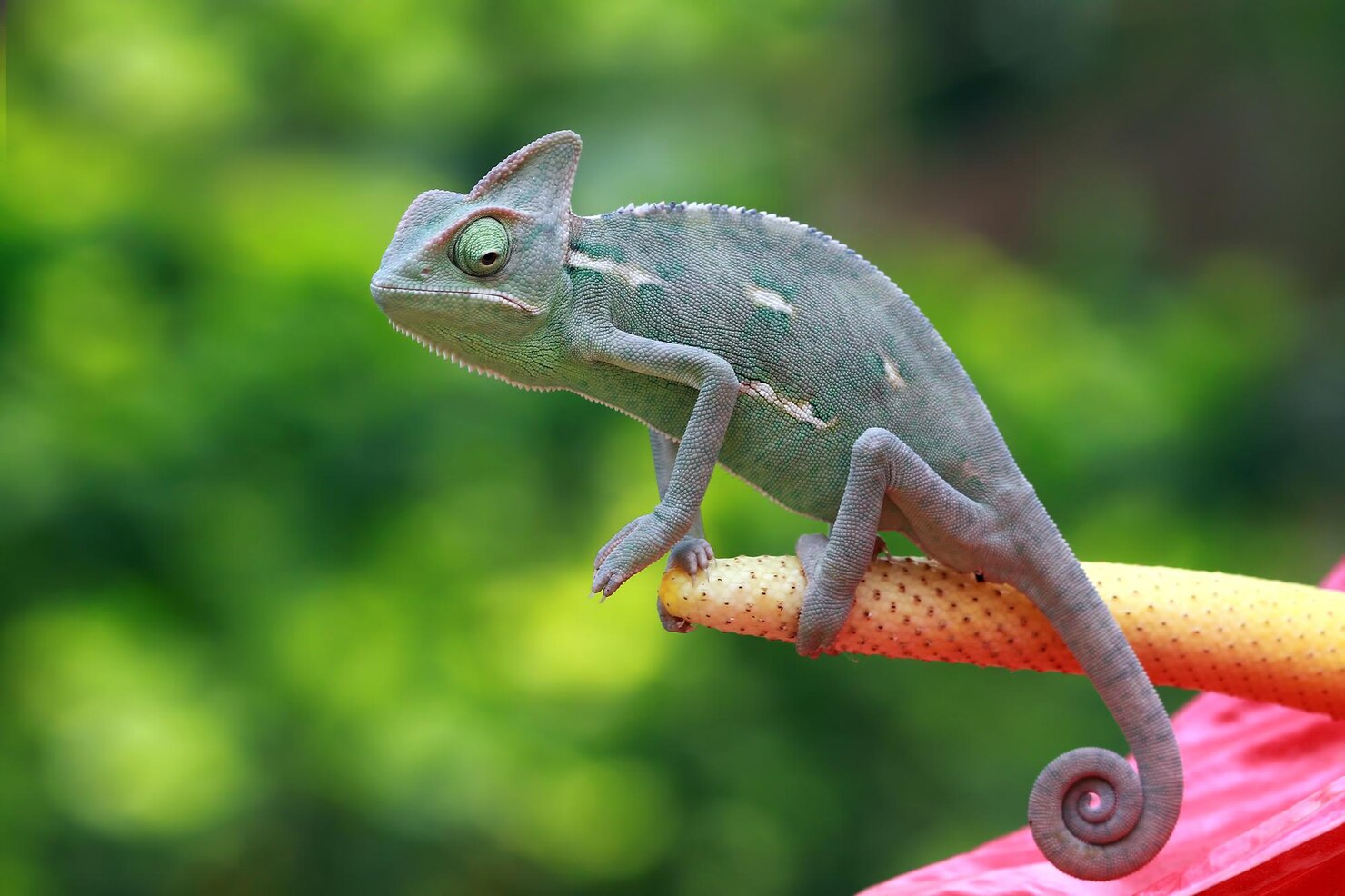Throughout history, humans have looked to nature to find symbolism and meaning in the world around them. Animals, in particular, have played a significant role in this pursuit, often serving as symbols in various cultures and belief systems. One such enigmatic creature that has captured the human imagination for centuries is the chameleon. Known for its ability to change colors and adapt to its environment, the chameleon has taken on diverse and intriguing symbolic meanings in different cultures around the world.
In this exploration, we will delve into what Chameleon as a Symbol represent, uncovering what they represent in various cultures and belief systems.
You may also want to read about the best chameleon cages.
Chameleon as a Symbol
Adaptability and Transformation
Across cultures, the chameleon is universally associated with adaptability and transformation. Its remarkable ability to change colors to blend into its surroundings has made it a symbol of flexibility and the capacity to adjust to changing circumstances. The chameleon’s mastery of camouflage serves as a metaphor for human adaptability, encouraging us to embrace change and evolve with our environments.

Observation and Patience
Chameleons are known for their slow and deliberate movements. In many cultures, this characteristic is seen as a symbol of patience and careful observation. Observing the world with a discerning eye, the chameleon reminds us to take our time, be patient, and make well-informed decisions.
Hiding One’s True Self
The chameleon’s ability to conceal its true colors has led to its association with the idea of hiding one’s true self or intentions. In some cultures, it represents deceit or duplicity, cautioning against those who may not reveal their true nature.
Chameleon Symbolism in African Cultures
West African Fables
In many West African cultures, chameleons are featured in folklore and proverbs. They are often portrayed as wise creatures, teaching valuable life lessons. Chameleon stories emphasize the importance of patience, adaptability, and the ability to see things from different perspectives. In these stories, chameleons are revered for their wisdom and strategic thinking.
Zulu Culture
In Zulu culture, the chameleon, known as “isilwane,” is associated with the idea of transformation and adaptation. The chameleon’s ability to change color represents the need to adapt to changing circumstances while maintaining one’s core identity. The Zulu people admire this quality and value those who can adjust to different situations without losing their true selves.
Chameleon Symbolism in Asian Cultures
Chinese Symbolism
In Chinese culture, the chameleon is often associated with the concept of blending in and adapting to one’s surroundings. It is seen as a symbol of harmony and balance, encouraging individuals to adapt and flow with the prevailing circumstances rather than resisting change.
Indian Mythology
In Indian mythology, the chameleon is connected to various deities and plays a symbolic role in religious stories. In some Hindu traditions, the chameleon represents the illusory nature of the material world. Its changing colors symbolize the transient and ever-changing nature of life, reminding adherents to focus on spiritual growth and enlightenment rather than material pursuits.

Chameleon Symbolism in Native American Cultures
The Navajo people of North America see the chameleon, or “chosh,” as a creature with the ability to communicate with the spirit world. Chameleons are believed to possess a deep knowledge of the supernatural and are consulted by Navajo medicine men and shamans for guidance. Their color-changing abilities symbolize a connection between the physical and spiritual realms.
Hopi Symbolism
Among the Hopi people, the chameleon is seen as a symbol of healing and transformation. The Hopi believe that chameleons have the power to help individuals adapt to life’s challenges and find balance. The chameleon’s ability to change colors reflects the Hopi value of harmony with the natural world.
Chameleon Symbolism in Western Cultures
Literary References
In Western literature, the chameleon has been used as a symbol of change and transformation. In Shakespeare’s play “Othello,” for instance, Iago compares himself to a chameleon, emphasizing his ability to adapt and manipulate his appearance to deceive others.
Modern Usage
In contemporary Western culture, the chameleon is often used as a metaphor for people who are adaptable and versatile in their careers or social roles. It is also employed to describe individuals who can easily fit into different social contexts and environments.
Chameleon Symbolism in Indigenous Australian Cultures
Aboriginal Beliefs
In Aboriginal cultures, the chameleon is seen as a creature that embodies the interconnectedness of all living things. It is associated with the Dreamtime, a spiritual concept central to Aboriginal belief systems. Chameleons are considered messengers between the spiritual and earthly realms, serving as a reminder of the importance of balance and harmony in nature.
Artistic Expression
Chameleons often appear in Aboriginal art, where their unique colors and patterns are used symbolically to convey stories and teachings about the natural world, the Dreamtime, and the continuity of cultural traditions.
Conclusion to Chameleon as a Symbol
The chameleon’s symbolism is as diverse as the cultures that revere it. From Africa to Asia, the Americas to Australia, this enigmatic reptile has left its mark on human consciousness throughout history. Whether representing adaptability, patience, transformation, or spiritual connection, the chameleon serves as a powerful symbol that transcends borders and resonates with people from all walks of life.
As we explore the symbolism of the chameleon in different cultures, we are reminded of the rich tapestry of human beliefs and values. These diverse interpretations of the chameleon highlight our collective fascination with nature’s wonders and our enduring quest to find meaning and wisdom in the world around us. In embracing the symbolism of the chameleon, we gain a deeper appreciation for the interconnectedness of all living beings and the timeless lessons embedded in the natural world.


